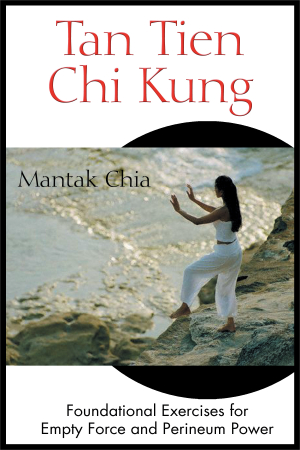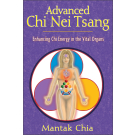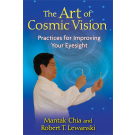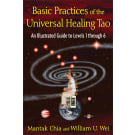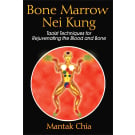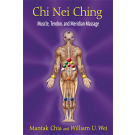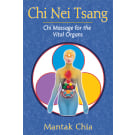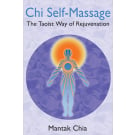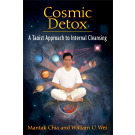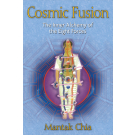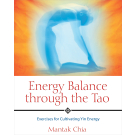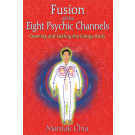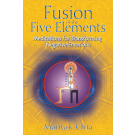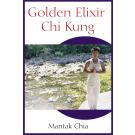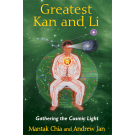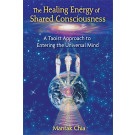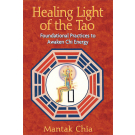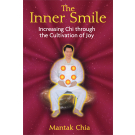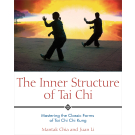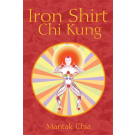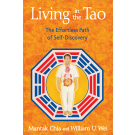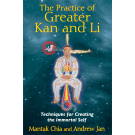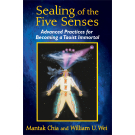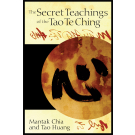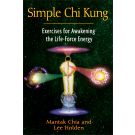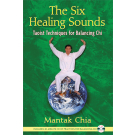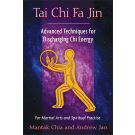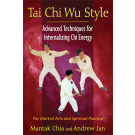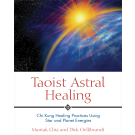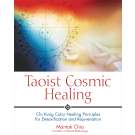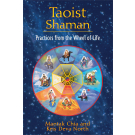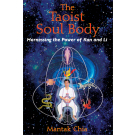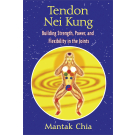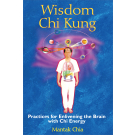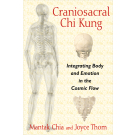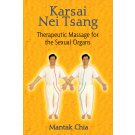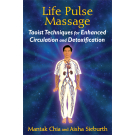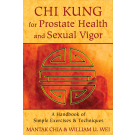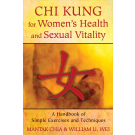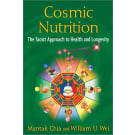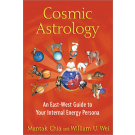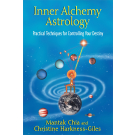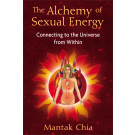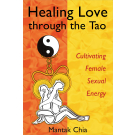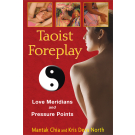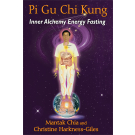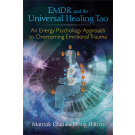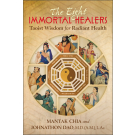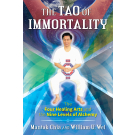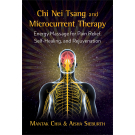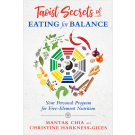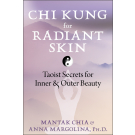- Edition: Revised Edition
- Pages: 192
- Book Size: 6 x 9
- ISBN-13: 9780892811953
- Imprint: Destiny Books
- On Sale Date: September 1, 2004
- Format: Paperback Book
- Illustrations: Full color throughout
A fundamental Taoist practice for enhancing and utilizing chi
• Includes breathing and movement exercises to promote vitality and healing through the cultivation of chi in the tan tien and perineum areas
• Presents the foundational exercises that are essential for more advanced practices such as Iron Shirt Chi Kung and Cosmic Healing
Tan Tien Chi Kung is the art of cultivating and condensing chi in the lower abdomen--the tan tien--the fundamental power storehouse of the body. Known as the Ocean of Chi to the ancient Taoists, this lower abdominal area holds the key to opening the body and the mind for the free and continuous movement of chi. Tan Tien Chi Kung contains specific breathing and movement exercises that develop the power of the chi stored in the body to increase vitality, strengthen organs, and promote self-healing. Mantak Chia explains how these exercises also provide a safe and effective method for receiving earth energy, which allows the practitioner to achieve balance physically, mentally, and spiritually--all of which are essential for the more advanced practices of Iron Shirt Chi Kung and Cosmic Healing.
It is our mind that directs and guides our chi, but if the mind and body are out of balance or under stress, the mind cannot perform this function. The tan tien actually contains a large quantity of neurotransmitters, making it a key source of body intelligence. It is for this reason the Taoists also referred to Tan Tien Chi Kung as Second Brain Chi Kung and created exercises that would allow practitioners to gain awareness of the tan tien’s function to restore the mind-body balance that is essential for spiritual growth and optimal well-being.
Smiling and Laughing Chi Kung
The Inner Smile
The Inner Smile is a powerful relaxation and self-healing technique that uses the energy of love, happiness, kindness, and gentleness as a language to communicate with the internal organs of the body. The practice also aids the transformation of negative emotions into positive, virtuous energy. This transformation is a very powerful Chi Kung practice. A genuine smile transforms negative energy into loving energy that has the power to relax, balance, and heal. By learning to smile inwardly to the organs and glands, you will cause your whole body to feel loved and appreciated and to enjoy more Chi.
The process of internal transformation in Tan Tien Chi Kung starts with the Inner Smile practice, in which we send a warm, loving Inner Smile down to the lower brain and lower abdominal area. It is the key practice for keeping Chi pressure in the lower Tan Tien and the whole body, and is the most effective practice for keeping all energy routes in the body open.
Although the Inner Smile at first sight would appear to be an easy practice, it actually represents a great challenge. It holds in all its apparent simplicity a highly concentrated way to change our whole attitude toward life and toward ourselves. It is the key to shifting and transforming our inner disposition and attitude so that we open ourselves to the ability to “flow with the stream of life.” It helps us learn to not “push against the river” and use force on ourselves and others. It trains us to accept ourselves and others so that, as we raise our awareness and mindfulness, transformation can come from within and not from above or outside.
The practice of the Inner Smile is not a shrewd trick or an easy device to forget or repress our pain. We need to recognize that we will invariably experience existential and other forms of pain as a natural part of the ups and downs of life. What the Inner Smile practice does is train us to look deeply into ourselves and to transform the pain into a source of self-transformation and empowerment. We become truly invulnerable not by ignoring pain but by becoming more vulnerable and in touch with ourselves. By so doing, we can be more sensitive to others and to the world. It is good to shed tears as we detoxify ourselves. In a patriarchal culture like ours, men are not supposed to shed tears because it shows their weakness. As we learn the Inner Smile, we open up to our deeper self and learn to process our pain. In this way we restore the energy flow so that we can laugh and smile again as we learn to embrace ourselves, others, and the world. The Inner Smile practice trains us to sense, feel, see, and hear deeply; it trains us to accept and embrace what is there so that our experience of life is opened up again.
By smiling into our whole body and being, we affirm the intrinsic goodness of existence and our gratitude for being alive. The inner smile creates the ground for self-esteem, which is necessary to develop inner dignity and self-empowerment.
The Inner Smile may be seen a first process of alchemical transformation on which all the others depend; it is the beginning of a new way of being. The practice teaches us to accept ourselves as we are, with a unique blend of good and negative energies. We need both of them in order to grow. Without the negative energies there would be no impulse for the transformation process and we could not raise our energy supply. The energy potential hidden in negative energies would remain repressed and untapped.
Smiling and Laughing Energy Practices
Inner Smile energy practice #1
1. This exercise teaches us to smile to the mid-eyebrow, eyebrows, eyes, mouth, jaw, tongue, lips, cheeks, ears, shoulders, rib cage, and brain. We then let the observing mind (the upper brain) sink down into the lower Tan Tien. Practice this exercise until you become familiar and comfortable with it. Begin by smiling to the mid-eyebrow. Relax and let go of all mental, emotional, and physical tension. Smile to the eyebrows, and visualize them growing long to the sides.
2. Smile to the eyes. Relax the eyes and feel how nice and cool they are. Let the eyes draw back in their sockets and start to sink down to the chest and gradually down to the abdomen, the home of your feeling and awareness mind.
3. Relax the two broad muscles extending from the outer portions of the upper lips across the cheekbones. Lightly smile, feeling the muscles’ connection to the upper front of the ears. Gradually feel the ears growing long (up and down).
4. Open your mouth and relax your jaw, separating the upper and lower teeth. Feel the jaw relax. Once the jaw relaxes, the shoulders will relax and drop down. Continue to feel the jaw relax until you feel saliva start to come out. Relax down to the rib cage. Feel the rib cage drop down, softening all the joints, relaxing down to the lower Tan Tien. Let the tongue relax back in the mouth. Feel the tongue start to drop down into the throat. Visualize all the energies of the head and face sinking down into the chest and all the way down to the navel and lower Tan Tien.
5. Smile to the shoulders. Relax until you feel the shoulders drop and the rib cage relax.
6. Lightly close the lips, but keep the teeth slightly separated. Physically begin a childlike smile, with the corners of the mouth gently uplifted and the outer edges of the eyes softly crinkled up. Breathe through your nose.
Acknowledgments
Putting Tan Tien Chi Kung into Practice
Introduction
1 • Chi and the Lower Tan Tien
Chi Pressure
Tan Tien Power
The Lower Tan Tien and Second Brain
Chi and Transformation
2 • Unlimited Potentialities
Our Bodies and the Body of
the Universe
The Chi Kung State and the Sense
of Wonder
Higher Cultivation
Energy Transformation and the
Lower Tan Tien
3 • Smiling and Laughing Chi Kung
Body Sensing
The Inner Smile
Smiling and Laughing Energy Practices
4 • Squatting Chi Kung
A Natural Posture
Squatting and the Psoas
Squatting Practices
5 • Breathing, Dancing, and Bone Chi Kung
Natural Breathing
Abdominal Breathing
Skin Breathing
Inner and Outer Dancing
Bone Marrow Nei Kung
6 • Closing the Three Gates
Anus-Body Connections
7 • Empty Force and Perineum Power
Building Pressure in the Lower
Tan Tien
Perineum Power Exercises
Dragon and Tiger Breath
Bladder Area Exercise
Solar Plexus Area Exercise
Bladder Area Exercise
Exercise for the Sides of the Lower
Tan Tien
Exercise for the Sides of the Body
Kidneys Exercise
Door of Life Exercise
Chest Exercise
Total Tan Tien Breathing
Exercise to Increase Chi Pressure
and Vibration
Working with a Partner
Releasing Tension in the Chest
Diaphragm
8 • Tan Tien Chi Kung Animal Postures
Tan Tien Chi Kung Warm-Up
The Eleven Animal Postures
Rabbit
Crane
Bear
Swallow
Dragon
Eagle
Monkey
Elephant
Rhinoceros
Horse
Bull
Ending Exercise for Animal Postures
9 • Chi Kung, Health, and Healing
The Body’s Wisdom
Subtle Wonders
Chi Kung as Active Energy Meditation
Self-Healing and Wholeness
Consciousness and Relaxation
Reactivation and Regeneration
10 • Chi and the Tao
The Lower Tan Tien and Chi Kung
Wisdom Mind
Chi Kung as Self-Actualization
Surrender and the Chi Kung State
About the Author
The Universal Tao System and Training Center
The Universal Tao System
The Universal Tao Training Center
Index
The Empty Vessel, Winter, 2005
Tan Tien Chi Kung is the art of cultivating and condensing chi in the lower abdomen--the tan tien--the fundamental power storehouse of the body. Known as the Ocean of Chi to the ancient Taoists, this lower abdominal area holds the key to opening the body and the mind for the free and continuous movement of chi.
Tan Tien Chi Kung contains specific breathing and movement exercises that develop the power of the chi stored in the body to increase vitality, strengthen organs, and promote self-healing. Mantak Chia explains how these exercises also provide a safe and effective method for receiving earth energy, which allows the practitioner to achieve balance physically, mentally, and spiritually--all of which are essential for the more advanced practices of Iron Shirt Chi Kung and Cosmic Healing.
It is our mind that directs and guides our chi, but if the mind and body are out of balance or under stress, the mind cannot perform this function. The tan tien actually contains a large quantity of neurotransmitters, making it a key source of body intelligence. It is for this reason the Taoists also referred to Tan Tien Chi Kung as Second Brain Chi Kung and created exercises that would allow practitioners to gain awareness of the tan tien’s function to restore the mind-body balance that is essential for spiritual growth and optimal well-being.
A student of several Taoist masters, MANTAK CHIA developed the Universal Tao System in 1979 and has taught tens of thousands of students from all over the world. He tours the United States annually, giving workshops and lectures. He is the director of the Universal Tao Center in northern Thailand and is the author of twenty-five books, including the bestselling The Multi-Orgasmic Man.



